Gravity Die Casting Services
We specialize in producing high-quality Gravity Die Casting Services to ensure optimal performance and durability in casting processes. We understand that GDC Dies are essential for the success and quality of casting operations in precision engineering.
Our Clients



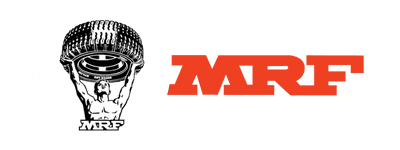
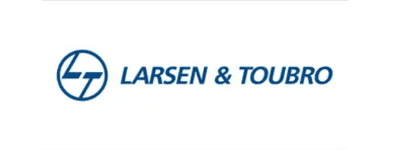






Advantages of Gravity Die Casting Services
Reduced Thermal Gradient Effects
In gravity die casting, the molten metal is poured into a preheated die, which helps maintain a uniform temperature across the casting. This reduces thermal gradient effects and minimizes internal stresses and defects such as warping and shrinkage.
Enhanced Mechanical Properties Due to Controlled Cooling
The process allows for controlled cooling rates due to metal dies, which helps achieve a refined microstructure. This controlled solidification can enhance mechanical properties like tensile strength and fatigue resistance by reducing the formation of coarse grains and promoting uniform crystal structures.
Precise Control Over Metal Flow Dynamics
Gravity die casting enables precise control over the flow dynamics of the molten metal. This control reduces the likelihood of air entrapment and ensures that the metal fills intricate die cavities, improving the cast parts' overall integrity and dimensional accuracy.
Improved Die Life and Dimensional Stability
Using high-quality, heat-treated dies in gravity die casting extends the life of the dies and maintains dimensional stability over multiple casting cycles. The thermal and mechanical stresses are evenly distributed, reducing die wear and ensuring consistent part quality throughout production runs.
Precision Engineering in Gravity Die Casting Dies
At Frigate Die Casting Services, our Gravity Die Casting Dies are built with high-grade materials and advanced technology, reflecting top-tier precision engineering and durability. These dies are made to precise specifications, meet high-quality standards, and are built to handle the tough conditions of gravity die casting. As suppliers of these dies, we ensure that their precision machining and innovative designs contribute to efficient and reliable casting operations, consistently delivering high-quality results.
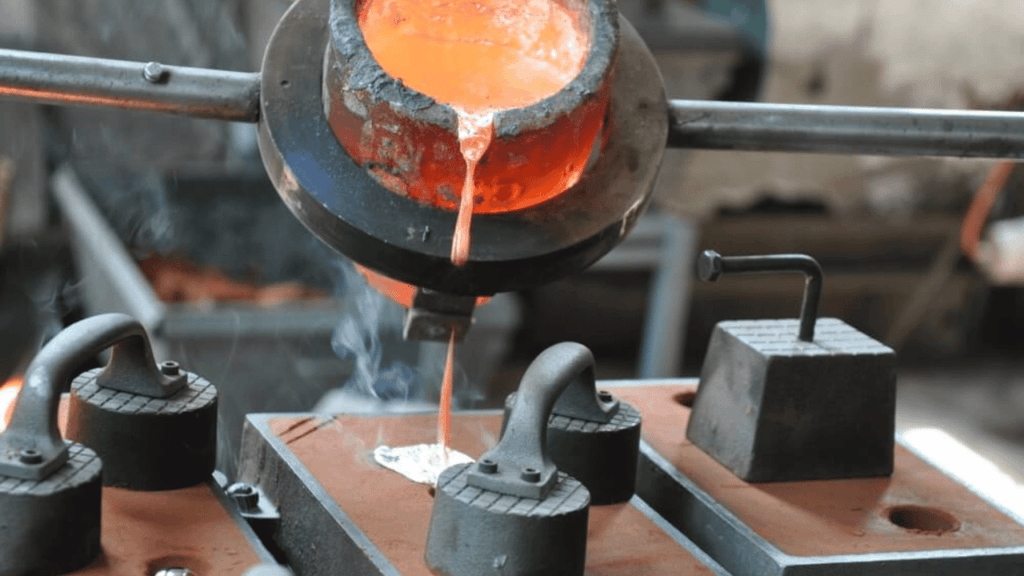
Get Your Quote Now
- Instant Quotation
- On-Time Delivery
- Affordable Cost
Our Gravity Die Casting Process


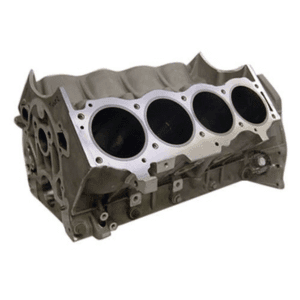
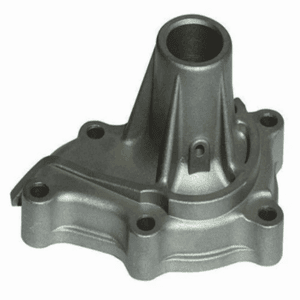
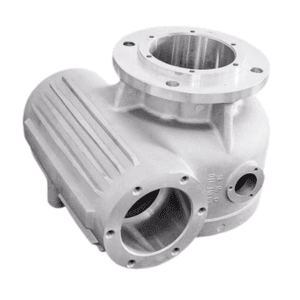
The metal die is cleaned and preheated to a specific temperature to prevent thermal shock and ensure uniform metal flow. A release agent is then applied to the die to allow easy removal of the casting.
Molten metal, typically aluminum or another alloy, is manually poured into the die cavity using gravity. Gravity ensures a controlled metal flow, filling the die evenly without external pressure.
As the metal cools inside the die, it solidifies. The controlled cooling process helps achieve a uniform structure, reducing internal stresses and improving the cast part's mechanical properties.
The die is opened once the metal has fully solidified, and the cast part is ejected. Care is taken to ensure the casting retains its precise shape and dimensional accuracy.
After removal, the cast part may undergo minor finishing processes such as trimming excess material, surface treatments, or machining, depending on the application's requirements.
Post-Processing Services in Gravity Die Casting
Post-processing enhances the strength, finish, and performance of gravity die-cast components. Various techniques, from heat treatment to precision machining, improve durability and precision for industrial applications
T6 (530°C–560°C, aging at 150°C–200°C)
Automotive (Engine blocks, Cylinder heads), Aerospace (Structural parts)
Blasting pressure: 4–6 bar
Industrial (Pump housings, Valves), Automotive (Brackets, Covers)
Surface finish: 0.8–3.2 µm Ra
Aerospace (Precision components), Medical (Implants, Surgical tools)
Vibratory (5–10 min cycle)
Thermal (800–1000°C)
Machinery (Gears, Bearings), Automotive (Transmission parts)
Curing temperature: 180°C–220°C
Electrical (Enclosures, Housings), Consumer Goods (Lighting frames)
Paint adhesion: >5B ASTM D3359
Automotive (Body parts, Wheels), Aerospace (Frames, Panels)
Sealant penetration depth: 0.5–1 mm
Hydraulic (Valve bodies, Pumps), Automotive (Fuel system parts)
X-ray resolution: 2–5 µm
Industrial (Motor housings, Heat sinks), Aerospace (Engine mounts)
Methoding in Gravity Die Casting
Automotive (Engine blocks, Gear housings), Aerospace (Structural parts)
Industrial (Pump housings, Hydraulic components), Electronics (Heat sinks)
Aerospace (Aircraft brackets), Medical (Surgical tool casings)
Automotive (Cylinder heads, Brake components), Machinery (Compressor casings)
Marine (Propeller housings), Energy (Turbine components)
Aerospace (High-stress components), Industrial (Hydraulic valves)
Automotive (Lightweight structural parts), Electronics (Connector housings)
Heavy Machinery (Load-bearing components), Aerospace (Landing gear)
Electronics (Thin-walled enclosures), Automotive (Precision castings)
Energy (Heat exchanger plates), Medical (Diagnostic equipment casings)
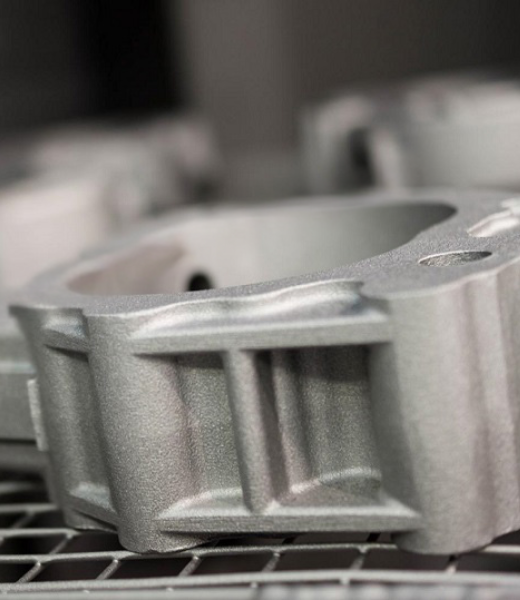
Gravity Die Casting Materials
Gravity die casting uses various metals to produce high-quality components. The choice of material depends on the components’ requirements, such as strength, weight, and corrosion resistance.
These are commonly used due to their lightweight, good mechanical properties, and corrosion resistance. Aluminum alloys like A356 and 319 are often chosen for their strength and durability in automotive and aerospace applications.
Zinc alloys are ideal for complex shapes and thin walls because they are known for their excellent fluidity and reproduction of fine detail. They also offer good mechanical properties and resistance to corrosion, making them suitable for electronic and precision components.
These alloys are selected for their high strength-to-weight ratio. Magnesium is used in applications where reducing weight is an important factor, including aerospace and automotive industries. It also offers good castability and dimensional stability.
copper-based alloys, such as brass and bronze, are used for their superior mechanical properties, including high strength and wear resistance. They are suitable for parts that require good thermal and electrical conductivity.
Enhancing Casting Efficiency with Gravity Die Casting
Gravity die casting provides precise dimensional accuracy and smooth surfaces, reducing the need for secondary machining. It allows for thinner walls, enabling complex shapes, and directly integrates inserts like threads or heating elements into the cast. With higher tensile strength than sand casting and rapid production rates, it’s ideal for longer production runs, especially in aluminum casting.

Compliance for Gravity Die Casting Services
Frigate’s gravity die casting services strictly follow global certification standards to ensure precise, durable, and defect-free components. These standards govern every aspect of the casting process, from material selection to dimensional accuracy, ensuring components meet stringent industry-specific safety, strength, and reliability requirements.
Key Compliance Standards and Certifications
Quality management system ensuring consistent production and defect prevention.
Automotive-specific quality standards for process efficiency and traceability.
Aerospace quality management system for high-reliability components.
Compliance with hazardous substance restrictions in materials.
Advanced certification for non-destructive testing (NDT) in aerospace and defense.
Standards for welding and casting strength in heavy-duty applications.
Compliance with aluminum alloy casting specifications.
Adherence to aluminum alloys' mechanical properties and chemical compositions.
Ensuring batch consistency and process validation.
Environmental management system for sustainable and eco-friendly production practices.
Tonnage / Capacity in Gravity Die Casting
Gravity die casting machines operate across a wide range of capacities, accommodating diverse part geometries, varying weights, and intricate design complexities. Their performance is defined by key parameters such as clamping force, mold size, and casting weight, ensuring precision and repeatability across industrial applications.
Automotive (Engine brackets, Transmission housings), Aerospace (Structural parts)
Industrial (Pump housings, Hydraulic components), Medical (Surgical tools)
Automotive (Cylinder heads, Gear housings), Machinery (Compressor bodies)
Aerospace (Aircraft fittings), Electrical (Transformer housings)
Electronics (Heat sinks), Automotive (Brake components)
High-volume production (Consumer goods, Engine components)
Automotive (Alloy wheels, Gear cases), Aerospace (Structural castings)
Heavy Machinery (Pump casings), Marine (Propeller housings)
Precision components (Medical, Aerospace)
Dimensions in Gravity Die Casting
Gravity die casting facilitates the manufacturing of high-precision metal components with complex geometries, tight tolerances, and superior surface finishes. This process ensures dimensional accuracy and structural integrity, making it suitable for critical applications across various industries.
Automotive (Cylinder heads, Transmission housings), Aerospace (Structural parts)
Electronics (Heat sinks), Automotive (Brake components)
Industrial (Pump housings, Hydraulic components), Machinery (Compressor bodies)
Aerospace (Engine components), Medical (Surgical instruments)
Automotive (Engine brackets, Gear housings), Electronics (Casings)
Aerospace (Bearing housings), Machinery (Rotors, Valves)
Consumer Goods (Lighting components), Automotive (Structural parts)
Industrial (Valve bodies, Hydraulic fittings), Aerospace (Fuselage components)
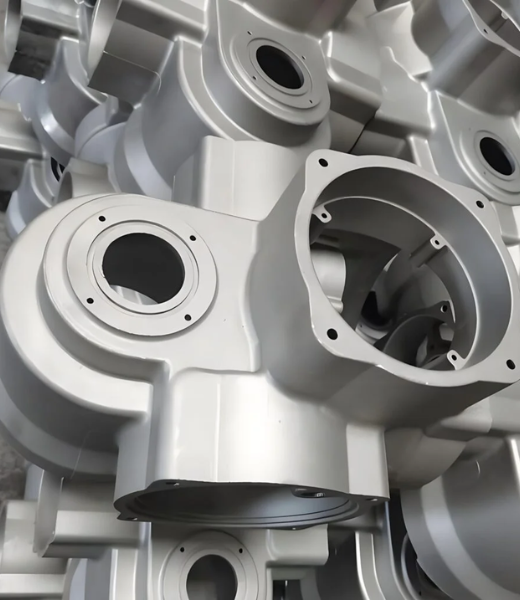
Tolerance for Gravity Die Casting Services
Adjustments for material shrinkage during cooling to maintain dimensional accuracy.
Ensures the alignment of cylindrical features like holes or shafts with their central axis.
Controls deviation between intersecting features, such as a hole and a surface plane.
Precise tolerances for fillets and radii to avoid stress concentrations and improve flow dynamics.
Defines the exact location of features relative to a datum within a specified tolerance zone.
Ensures surfaces or features are parallel within the specified range for proper assembly.
Controls complex curved surfaces to ensure they match design specifications.
Controls thickness variations along the length of tapered sections.
Limits internal porosity to ensure structural integrity and pressure-tightness in critical applications.
Accounts for dimensional changes after processes like T6 or T7 heat treatment cycles.
Specifies flatness control for large, planar areas under strict mechanical requirements.
Tolerances for maintaining consistent draft angles across all mold cavities.
Ensures dimensional stability under varying operational temperatures.

Quality Testing Standards for Gravity Die Casting Services
Identifies internal stresses in the casting to prevent warping or failure during operation.
Confirms the heat treatment cycle effectiveness for achieving desired material properties.
Evaluates the surface's durability under friction and abrasive conditions.
Measures material expansion due to temperature variations, critical for thermal stability.
Detects dissolved gases like hydrogen to avoid porosity and improve casting quality.
Verifies the density to detect porosity and ensure material homogeneity.
Detects surface or near-surface cracks in ferrous materials.
Measures the corrosion rate and identifies susceptibility in various environments.
Determines the propagation rate of cracks under cyclic loading conditions.
Measures energy absorption during fracture to evaluate toughness.
Assesses mold design efficiency and predicts shrinkage effects.
Detects internal defects such as voids or inclusions with high precision.
Evaluates long-term performance under high temperatures and sustained loads.
Determines conductivity, vital for electrical applications.
Tests the part’s resistance to bending forces, ensuring compliance with mechanical load requirements.
Inspection Techniques in Gravity Die Casting
Value/Range - 50–450 kV (Energy Level)
Aerospace (Engine mounts, Turbine components), Automotive (Cylinder heads)
Value/Range - 0.5–10 MHz (Frequency)
Energy (Turbine blades), Medical (Implants, Prosthetics)
Crack Width Detection: 0.001–0.1 mm
Electronics (Heat sinks), Marine (Propeller housings)
Crack Depth: Up to 6 mm
Automotive (Brake calipers), Industrial (Pump housings)
Depth: ±0.01–0.1 mm (Precision)
Aerospace (Structural fittings), Medical (Surgical tool casings)
Resolution: 0.01–0.05 mm
Automotive (Gear housings), Energy (Heat exchanger plates)
HB 50–200, HRC 20–60, HV 100–500
Industrial Machinery (Compressor bodies), Marine (Valve casings)
Value/Range - 100–500 MPa
Heavy Machinery (rollers), Oil & Gas (valve bodies)
Pressure Range: 0.1–5 MPa
Electronics (Enclosures), Automotive (Fuel system components)
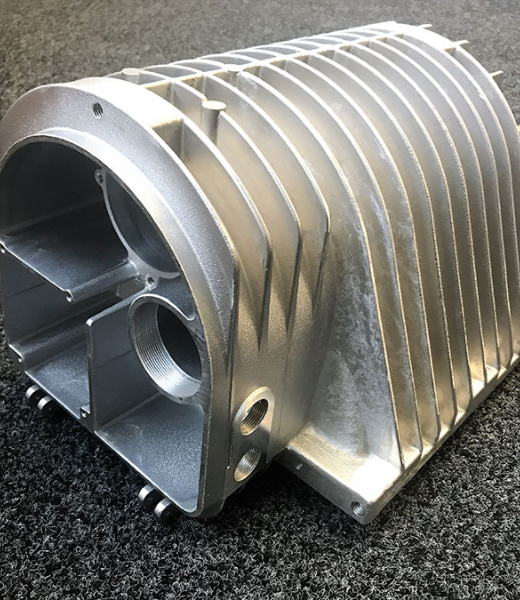
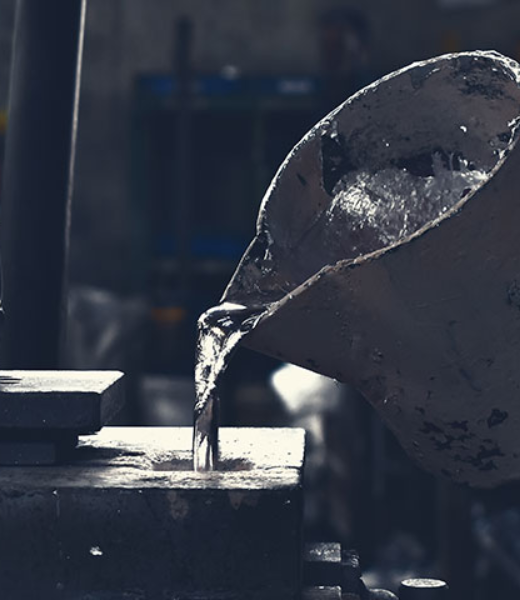
Industry Applications of Gravity Die Casting
High strength-to-weight ratio, Thermal management, Tight tolerances
Heat and wear resistance, High fatigue strength, Complex geometries
Corrosion resistance, Load-bearing capability, Dimensional stability
Biocompatibility, Non-porous surfaces, Extreme accuracy
Structural integrity, Thermal performance, Long service life
Saltwater resistance, Mechanical durability, High-pressure tolerance
Efficient thermal dissipation, Electrical insulation, Precision machining
Impact resistance, Load-bearing properties, Vibration damping
Gravity Die Casting in the Automotive Industry
At Frigate, we utilize gravity die casting services to produce high-strength and precisely engineered automotive components, such as engine blocks and transmission housings. Our process ensures exceptional dimensional accuracy and a smooth surface finish using gravity to fill preheated dies with molten metal. The controlled solidification of the metal enhances mechanical properties like tensile strength. Additionally, our capability to integrate inserts directly into the casting reduces the need for further machining. This approach ensures that our parts are reliable, durable, and meet the rigorous standards of the automotive industry.



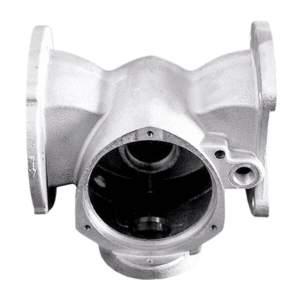


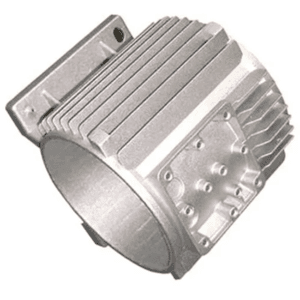

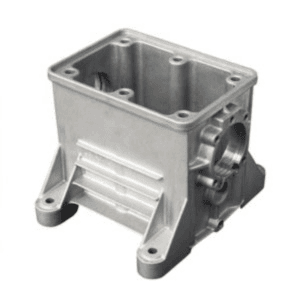
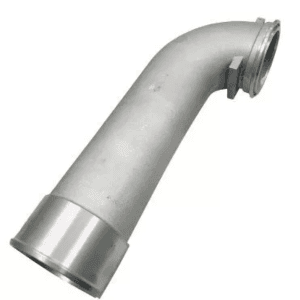
Industries We Serve
- Solid Progress
What You Gain with Us
We make your profitability and operations easier with practical approach.
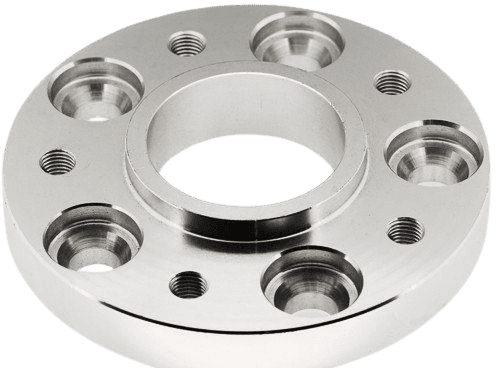

↓ 7-8%
OPS COST

↓ 2-3%
COGM

3X
Aggregation

↑ 25%
Machinery Utilisation

↓ 50%
Expedition

↑ 30%
Frigater Revenue
Custom Gravity Die Casting Services
Our custom gravity die-casting services offer precise and reliable manufacturing for complex components. We use high-quality dies, preheated to prevent thermal stress, and control molten metal pouring to ensure accurate fills. This process allows for intricate shapes and detailed features with high dimensional accuracy and smooth surfaces, reducing the need for secondary machining. Each casting meets strict standards for strength and durability, making it ideal for diverse applications.

Check Out Our Blogs
What Our Customers Say about Frigate

21%
Faster Manufacturing


Having Doubts? Our FAQ
Check all our Frequently Asked Question
Gravity die casting works well with metals like aluminum, zinc, and magnesium. These metals are light and have good fluidity. They fill the mold easily, making it easier to create detailed shapes. Their low melting points also save energy during production.
The temperature of the molten metal is crucial. If it's too low, the metal may not fill the mold, leading to weak spots. If it's too high, it can cause defects like gas bubbles. Keeping the right temperature ensures strong, high-quality parts.
Mold design is vital for gravity die casting. A well-designed mold allows the metal to flow smoothly and cool evenly. Features like vents and risers help release trapped air and ensure the metal fills all areas, reducing defects and improving part strength.
Cooling time affects how well the metal solidifies and how strong the final part will be. If the cooling is too fast, the metal may crack. If it's too slow, it can warp. Finding the right cooling time helps achieve the best dimensions and mechanical properties.
Surface finish in gravity die casting can be controlled through mold treatment and design. Using coatings or polishing the mold can improve surface quality. Adjusting the pouring speed can minimize turbulence, resulting in smoother surfaces. This enhances the aesthetic and functional properties of the final product.
We'd love to Manufacture for you!
Submit the form below and our representative will be in touch shortly.
LOCATIONS
Global Sales Office
818, Preakness lane, Coppell, Texas, USA – 75019
Registered Office
10-A, First Floor, V.V Complex, Prakash Nagar, Thiruverumbur, Trichy-620013, Tamil Nadu, India.
Operations Office
9/1, Poonthottam Nagar, Ramanandha Nagar, Saravanampatti, Coimbatore-641035, Tamil Nadu, India. ㅤ
Other Locations
- Bhilai
- Chennai
- Texas, USA

